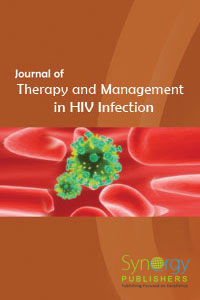
Preclinical and Clinical Safety and Efficacy of Faramir Treatment: A Novel Anti-Retroviral Drug Pages 28-34
Seyed Ahmad Seyed Alinaghi1, Minoo Mohraz1, Ebrahim Farzam1, Hamid Reza Khorram Khorshid2, Koorosh Kamali3, Leila Sadeghi1, Saeed Bayanolhagh1 and Fatemeh Golsoorat Pahlaviani1
1Iranian Research Center for HIV/AIDS, Iranian Institute for Reduction of High-Risk Behaviors, Tehran University of Medical Sciences, Tehran, Iran; 2Genetic Research Center, University of Social welfare and Rehabilitation Sciences, Tehran, Iran; 3Public Health Department, School of Public Health, Zanjan University of Medical Sciences, Zanjan, Iran
DOI: https://doi.org/10.12970/2309-0529.2018.06.05
Download PDFAbstract: Background: Alternative treatment is generally used from the first reporting of HIV/AIDS. Introduction of new herbal drugs with antiviral properties may be a significant contribution towards treating HIV-positive patients. This survey was thus conducted in order to evaluate preclinical toxicology, clinical safety and efficacy of Faramir.
Objective: To evaluate preclinical and the clinical safety and efficacy of “Faramir”
Methods: In the first stage, carried out in 2011, toxicity tests were examined on three groups of six male rats administered different dosages of the drug. In the second stage, Phase II clinical trial with Faramir was conducted at the Voluntary Counseling and Testing (VCT) Center at Imam Khomeini Hospital, Tehran, Iran from February 2012, as a single arm clinical trial. After checking inclusion and exclusion criteria, seven HIV-positive patients received the treatment with Faramir tablets containing 330 mg three times a day for six months. The patients were evaluated for the treatment efficacy and the possible adverse effects. Patients were also followed for six months after the treatment duration. Laboratory tests and CD4 counts were checked each month and viral load was measured each three months. Adherence to treatment, clinical observations and adverse effects were registered each month.
Results: In the toxicity tests, gavages’ administration up to 2 gm/kg showed no poisonous effect or mortality after 72 hours. Viral load decreased significantly after receiving the treatment duration (P=0.028). The effect of Faramir on viral load showed a decrease of virus number in three patients as undetectable. Faramir did not show any serious adverse effects except mild skin rashes in three people (42.9%), distension in two people (28.6%), diarrhea in two people (28.6%), stomach burn in one person (14.3%), local dry skin in one person (14.3%) and itching in one person (14.3%) which were improved without discontinuation of the drug. The symptoms disappeared with necessary treatments.
Conclusions: In this stage, some evidence was found in support of the efficacy and safety of Faramir. Implementation of phase III clinical trial is recommended.
Keywords: HIV, Faramir, Viral load, CD4 count.
Read more

